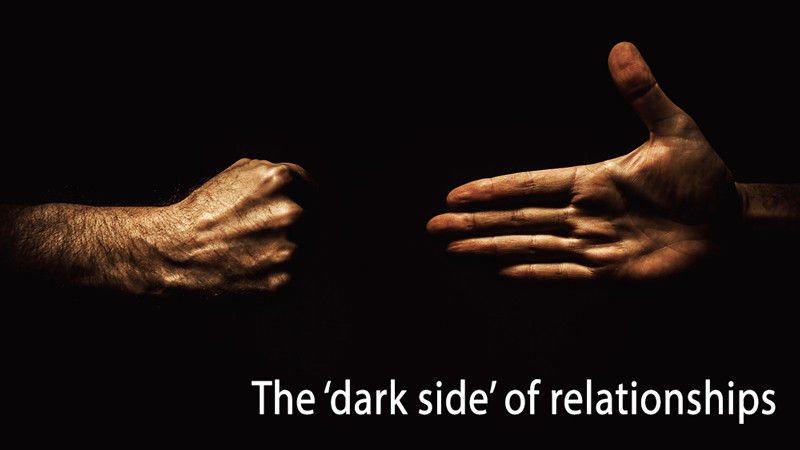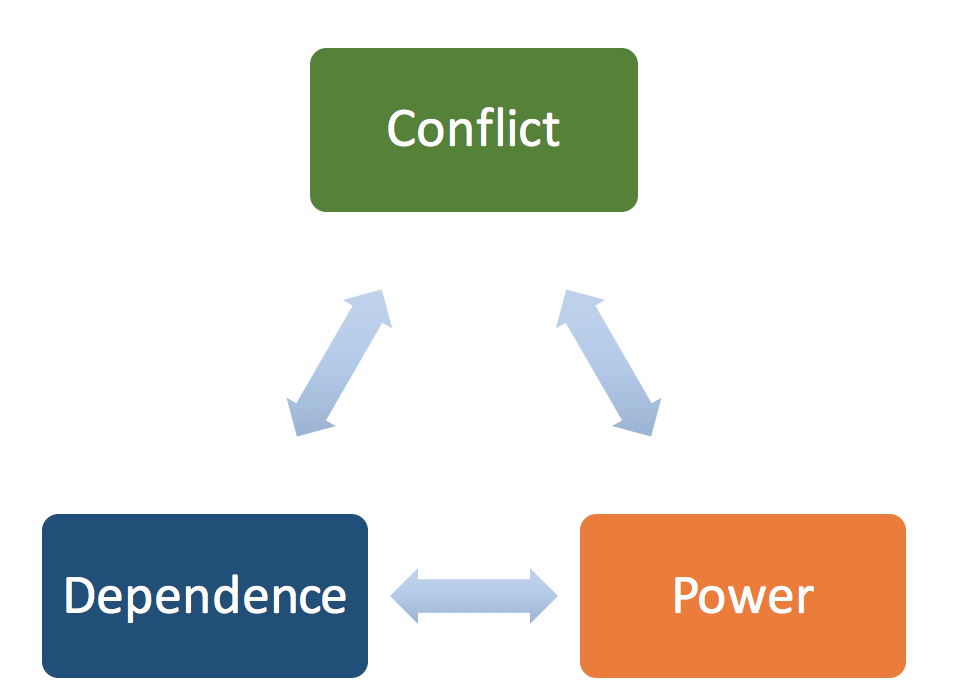- in Blog by David Wilkinson
- |
- 3 comments
Unravelling the ‘dark side’ of relationships: New research

New research has unravelled the dark side of relationships (business). This research briefing looks at the dark triad of relationships…
- Balance
- Management analysis
- The 3 factors of business communications
- Conflict
- What generates conflict
- Power
- Dependence
- The ‘dark triad’ of relationships
- References
All of us have probably had issues with a telephone or utilities supplier at some point. Some of the larger companies frequently have very poor customer service reputations and this does impact on their ability to retain business. Another common case is how utility customers feel when they know that the price of gas is at a historic low yet their gas supplier drops their retail price by only a few percentage points – and still far above the cost when wholesale prices were last comparably low.
How does the balance of power affect your relationship with a supplier or customer? Are there resentments or contradictions between you? A paper just published by researchers in France looked at the component parts of the ‘dark side’ of customer – supplier relationships.
When things are going well, management usually pays little heed to what is going on between themselves and their customers or suppliers. It tends only to attract their attention when things change for the worse or there is a complaint. The researchers contend that this is too late and “For managers, it is critical to consider and think over where they stand on the relational continuum and where they want to stand”.
The 3 factors of business communications
The researchers discovered that there are three interrelated issues in most relationships between companies:
1. Conflict
2. Power and
3. Dependence

Conflict can arise between organisations in any number of areas. What this research found was that conflict, contrary to popular belief can have both positive and negative aspects. For example, they found that conflicts arise most in ‘high involvement’ relationships compared to ‘low involvement’ relationships where things are kept at arms length and there is little or no investment in the relationship. Conflict is a natural part of all relationships and is only a real problem when it becomes dysfunctional. Unresolved and continual conflict often results in a termination of the relationship. This is not always negative.
There is a range of issues that generate conflict like:
1. Lack of role clarity
2. Relationship uncertainty
3. Product uncertainty
4. Differences in business practices
5. Cultural differences
What the research identifies is that asymmetric relationships tend to accelerate conflict situations. These are relationships where there is an unequal distribution of power and they frequently result in conflict as the stronger or more powerful organisation prioritises its own needs in the relationship.
Having power in a relationship does not necessarily lead to conflict on its own. The researchers identified that there is a difference between having and using power. Where the organisation in power is trying to win, then the power is being used and will likely result in conflict. This includes forms of coercive power. However, where the organisation in power is trying to achieve a fair and equitable result (win/win) almost any conflict is likely to be voiced and resolved.
Power imbalances often lead to opportunism and less cooperative resolution tactics. However, usually, these result in the eventual breakdown of the relationship.
What this is saying in effect that it is beholden to the organisation with the power to listen and respond for the long term health of the relationship.
Where a utility company is refusing to give you better rates for example, you can usually just walk away and these days many do. What happens is that most customers are too small for a utility company to care either way about.
What this is saying is the way relationship asymmetry is managed, particularly by the most powerful member of the relationship, will tend to dictate both the level of conflict inherent in and the longevity of the relationship.
Dependence in any relationship automatically gives power to the non-dependent member of the association. As such this is often another source of conflict. In effect the dependent party, particularly in a supplier relationship has their freedom to operate restricted to those defined by the non-dependent side of the relationship.
It has also been found that this often severely restricts and reduces supplier innovation for example, and rarely enhances the relationship if the non-dependent member uses its power
for its own ends, at the expense of the other.
Additionally an unbalanced relationship, one where one party is dependent on the other, might at first appear advantageous for the non-dependent party. However this study shows that in fact it promotes distancing within a relationship and engenders the non-dependent party to use their power with all the aforementioned problems associated with this scenario.
Whilst this study looks specifically at what the authors termed ‘the dark side’ of customer-supplier relationships, many of the findings appear to have significance beyond this environment.
The ‘dark triad’ of relationships
However, this is a useful triadic framework for all businesses and organizations to use to consider the nature and consequences of their relationships externally and internally.
The paper concludes that, “Our …review should draw practitioners’ attention to the fact that the “bright” side of a relationship can turn to the “dark” side and relational benefits attached to a specific relationship should not be considered as an outcome but as a resource that needs to be nurtured and developed.”
In short, relationships that develop over time into unequal and unbalanced associations are largely unhealthy and likely to result in breakdown at some stage. The dark triad of relationships; power, conflict and dependence are interlinked and unless handled honestly and with the intent of fostering better relations by the party with the power, tend to be doomed to ever worsening dynamics.
Be impressively well informed

Get the very latest research intelligence briefings, video research briefings, infographics and more sent direct to you as they are published
Be the most impressively well-informed and up-to-date person around...

@David I cannot find this in our library of resources
2figures
Not so sure this “darkside” concept is ‘new’ as much as it is a reframing of research that goes back to Lewin and Argyris in the 50s, along with some related findings by Mikalachki in the 60s. Having spent a lifetime in the energy industry, I can tell you that asymmetry all by itself is irrelevant. Unless a customer/organization is a high-volume user and has sufficient capital to invest in either equipment energy conversion or a delivery infrastructure investment to switch-over to another provider (or to just get up and leave a geographic area), they have little to no power in the rate equation. The regulated monopoly markets aren’t necessarily the best place to look for models that are more generalizable to competitive markets.